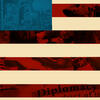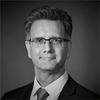A History of the Center for the Study of Force and Diplomacy
Written by Richard Immerman
As my tenure as CENFAD director comes to a close in spring 2017, I can’t help but think back to how it all began—and the many way stations in between. I won’t bore you with the whole story. It’s a long one. But for the sake of ensuring that I’m not the sole keeper of CENFAD’s institutional memory, I’ll jot down the CliffsNotes version.
I received a phone call from Russ Weigley sometime in early spring 1991 asking me if he might interest me in an appointment in History at Temple University. At the time I’d been at the University of Hawaii for almost 9 years—but had returned to Princeton University from 1987-1989. While there I had decided, much to my wife Marion’s chagrin, that I preferred the northeast to our Pacific paradise. Several months before Russ called, she begrudgingly agreed that I could explore possibilities in Providence, Rhode Island; Baltimore, Maryland; and Philadelphia.
Raised Jewish, I knew the word bashert, and that’s how I interpreted Russ’s call. I also knew Russ’s reputation as the foremost US military historian in the country. And I knew David Rosenberg personally. David had recently both joined the History Department’s faculty and received a MacArthur “genius grant.” He was in my judgment the foremost historian of US nuclear strategy. And I knew Waldo Heinrichs, who had bequeathed to Temple an enviably rich legacy in the history of US foreign relations. Without hesitation I told Russ yes—I was very interested.
I visited Temple that May and had dinner with Russ the first night after my arrival. It was just the two of us, and we formed an immediate bond, talking mostly about Eisenhower and the Phillies (separately). Somewhere later in the conversation Russ brought up an embryonic plan to establish a center based around himself, David, and whomever replaced Waldo, who had been the one to float the idea originally. Further, the prospect of such a center, which would institutionalize Temple’s by now historic strength in military and diplomatic history, had induced then university President Peter Liacouras to authorize a senior hire. I was intrigued. But frankly, the appointment’s appeal had less to with a potential center than the potential of joining forces with Russ and David.
The next day I gave my job talk. The day after that Jim Hilty, the department chair at the time, called to offer me the position. Actually, he called Marion first to find out where I was, letting the cat out of the bag even as he elevated her level of anxiety exponentially by confirming that possibility we’d leave Hawaii was real. Her reluctance to move made the negotiations difficult; I was sold after that first dinner with Russ, but Marion drove a hard bargain—with me and the university. And Temple didn’t make it easy to “transfer” tenure. Nevertheless, everything ultimately fell into place. Almost a year and a half later, I arrived at Temple in time for the fall 1992 semester.
Getting a center up and running took much longer. For that purpose the then-dean, who will remain nameless, had pledged seed money in my letter of appointment. By fall 1992, however, she had left Temple; the funding did not materialize. Further, Russ (and David) had neglected to tell me that they, and for that matter everyone else, had assumed that I would be responsible for organizing the center (we would officially be co-directors). I’d done a bit of administration early in my career at Princeton, but there I’d benefited from extensive institutional support. At Temple I was pretty much on my own. But I came up with the idea to recruit Paul Miles. Paul, a Rhodes Scholar and retired colonel in the US Army, had served as General William Westmoreland’s aide-de-camp in Vietnam and taught at West Point for more than a decade. I intially met him in 1978 when he was a Ph.D. student at Princeton. I proposed that Paul come on board as the center’s executive director. Russ, who like so many military historians held Paul in the highest regard, immediately endorsed the idea. He even allocated his research stipend to Paul as a “salary.”
Paul and I met regularly over that first year, putting together a mission statement (it was Paul who, drawing on the writings of Frederick the Great, proposed the name Center for the Study of Force and Diplomacy), identifying potential donors in the Philadelphia area (at the time the director of development for the College of Liberal Arts—then the College of Arts and Sciences—was a graduate student in History), and otherwise imagining, and that’s the right verb, the center. At the end of the year we scheduled a “launch.” We enlisted former Secretary of the Navy John Lehman, a Philadelphia native whom David Rosenberg knew, to give the inaugural lecture, and invited scores of alumni, potential donors, and others to attend a following reception. We must have invited over 150. Perhaps 25 attended—the lecture and/or the reception. And that included Paul, Russ, David, myself, our spouses, and Dean Carolyn Adams.
So we rebooted. Or actually, I rebooted. My plan was for Paul to receive an appointment as a part-time administrator and part-time teacher. When two years on it became evident the plan was a non-starter, Paul returned to Princeton, where he completed his Ph.D. and received an appointment as a lecturer. Soon thereafter, David left Temple for a chair in maritime strategy at the National War College, and Russ retired. After agreeing in 1998 to chair the History Department, I received authorization to hire Regina Gramer to teach some of my courses and serve as associate director. But with paltry few resources, we were swimming upstream. We conceived of several projects and applied for external funding. We had little success. With the help of Dean Adams we did manage to raise the funds to host some high profile speakers—probably the most prominent was former National Security Advisor Anthony Lake. To listen to Lake (he spoke on NATO expansion) and a few other notable lecturerers, hundreds of students, faculty, and alumni packed into Kiva Auditorium. The John Lehman debacle faded from memory. But we continued to operate on a shoestring.
Early in the new millennium, the situation took a dramatic turn—for the better. Interim Dean Morris Vogel introduced me to Jay Rosen and Ed Sherman, Temple alumni and military veterans who almost a half-century before had co-founded a successful company that connected attorneys with experts in a variety of field. They became stalwart supporters, contributing money, ideas, and much more (it was Ed who came up with the acronym CENFAD). By then the department had hired several faculty to bolster CENFAD’s ranks. When Susan Herbst became dean, she authorized our hiring more—many more. And along with new faculty came new graduate students—a lot of them, and they were very, very good.
This was the time, ironically just as I stretched myself far too thin by agreeing to direct the Center for the Humanities (CHAT) as well CENFAD while continuing to chair History, that it all came together. I think it helped that I was being pulled in so many different directions, because that provided more space for the new faculty and new graduate students to take more initiative. Indeed, it was appropriately the graduate students, CENFAD’s primary focus since its inception, who proved the most instrumental in its evolution. Many chose Temple because of CENFAD, and they wanted to give back. Graduate students endowed CENFAD’s first two fellowships, the Thomas J. Davis Fellowship in Diplomacy and Foreign Relations and the Sergeant Major William F. Berger Fellowship in War and Society. But more fundamentally, they wanted to claim more ownership of it. So they took over Strategic Visions, the newsletter. Perhaps even more important, it was a cohort of graduate students who proposed CENFAD launch a series of colloquia. That proposal turned the tide.
The graduate student’s proposal coincided with former Temple President Marvin Wachman and his wife Adeline gifting to CENFAD an extremely generous endowment. Their generosity (and the conviction that accompanied it) enabled CENFAD to sponsor a colloquia series that has grown in leaps and bounds over the past close to 15 years and attracted a remarkably distinguished array of scholars, government officials, and military officers. Hosting the series, and taking in the intellectual excitement and recognition that has attended the series, has brought me great satisfaction.
What brought me equal satisfaction was that during my absences, CENFAD didn’t miss a beat. With first Will Hitchcock and then Beth Bailey serving as acting directors, not only did the colloquium series prosper, but also CENFAD sponsored workshops on international history, human rights, and the military and society. Will and I won a grant to support a program on Grand Strategy, integral to which was a fabulously successful consortium that we co-hosted with the Foreign Policy Research Institute. And Beth and I co-organized a symposium on the Iraq and Afghanistan Wars, which we then turned into a book published by NYU Press. I also collaborated with Drew Isenberg and Temple Ph.D. Ryan Edgington on the “Imagining Cold War Environments” symposium, with Ph.D. student Michele Lauro for another, “India and the World from the Great War to the Cold War,” and with Petra Goedde and Bryant Simon on one focused on global consumption, “The State of Buying.” I had once worried that CENFAD might become “mine.” But its history testifies that it became “ours.” And increasingly it’s become “theirs” as well. CENFAD has co-sponsored conferences from Berlin to Saratov. Just this past fall it co-sponsored with Southern Methodist University’s Center for Presidential History a symposium in Taos, New Mexico entitled “14 Points for the 21st Century.” The University of Pennsylvania Press will publish the resultant collection of papers to commemorate the centennial of Woodrow Wilson’s.
I am delighted that Alan McPherson, with his distinguished record of scholarship and years of leadership experience will succeed me as CENFAD’s Marvin Wachman Director. And I am delighted—and proud—that the CENFAD Alan will take over is no longer the “mom and pop” operation that Russ, David, and I cobbled together almost a quarter century ago. It’s more robust, it’s more diverse, and it’s more renowned. As one speaker told me some years ago, for scholars, CENFAD is now “on the circuit.” But perhaps most gratifying of all is that the prime beneficiaries of CENFAD have been the students. They receive the research support, they contribute to the projects, they attend the lectures and conference, they interact with the visitors, and they forge close and lasting relationships among each other. At the conference recently held to mark my retirement, many of those students, including a large number of former Thomas Davis fellows, thanked me. I want to thank them. My work with CENFAD has literally been a labor of love. They have been the reason.
Center Contact
Center for the Study of Force and Diplomacy
Temple University, Department of History
918 Gladfelter Hall
(215) 204-7466
Fax: (215) 204-5891



